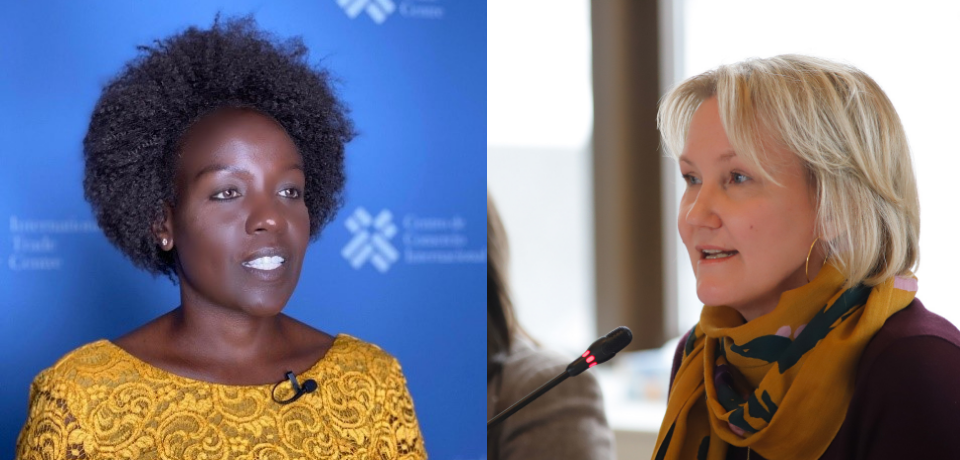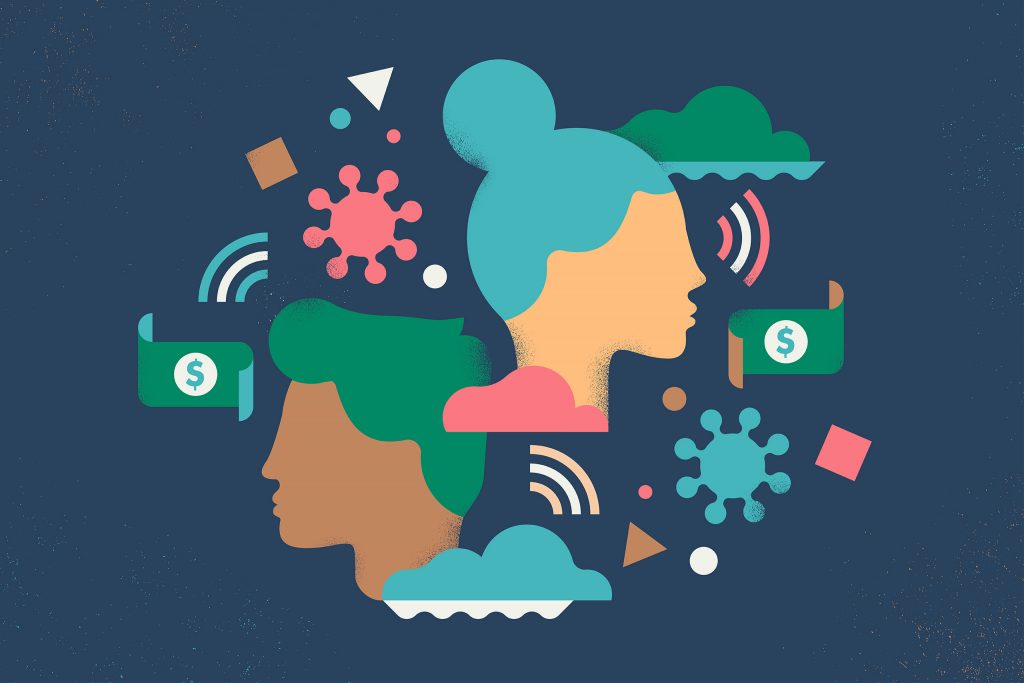Author: Nicole Fournier-Sylvester, Ph.D.
BiographyNicole Fournier-Sylvester, Ph.D.
Dr. Nicole Fournier-Sylvester is the Education Manager at the Global Centre for Pluralism. She has an extensive record of publications, conference presentations and professional development workshops on pluralistic dialogue, digital citizenship, critical thinking and decolonization. As a co-investigator for Project Someone she developed curriculum on critical thinking in online spaces, developed facilitation training modules and provided content expertise for the Hate to Hope: Building Resilience Through Understanding MOOC. Her dissertation, Connected: Facilitating Transformative Online Dialogue in Peace-Building, Reconciliation, and Global Citizenship Education Programs, compared international online education programs designed to alleviate conflict, address controversial issues and advance 21st century learning capacities. Nicole has over ten years of experience developing and teaching courses on democracy and cultural diversity, ethics, education and social change. She has also served as a coach and facilitator for Soliya’s international virtual exchange Connect Program.

The COVID-19 pandemic has brought to light—and exacerbated—many of the existing inequities in education systems worldwide. Although long-term consequences remain unclear, one issue is certain: access to technology and the internet is increasingly tied to the right to education.
Using technology requires a set of digital citizenship skills that help learners move comfortably and safely into online environments, whether for information, education, employment or social purposes.
This blog post highlights how a Pluralism Lens can be applied to technology, the internet, and education in the COVID-19 era and beyond. With this framework, online spaces can be created that are accessible to all and where differences are valued.
The Global Centre for Pluralism’s “Pluralism Lens” Framework
Several digital literacy and citizenship education frameworks have been developed and refined over the past 20 years (see, for example, Council of Europe, n. d.; ISTE, n. d.; Ribble & Bailey, 2007). As a former humanities teacher and researcher in the fields of citizenship education, critical intergroup dialogue, and virtual exchange, I am convinced that adopting a “Pluralism Lens” can help support young people across the globe to apply respect for diversity to how they understand and relate in online spaces.
The Centre’s Pluralism Lens Framework is built upon the understanding that even the most inclusive institutions and policies may succumb to fear-based or exclusionary attitudes. As such, promoting pluralism requires that we investigate both institutions (“hardware”) and mindsets (“software”) (Kymlicka, 2017).
This approach applies equally to discussions of pluralism within the digital realm.
The Hardware of Digital Pluralism
What are we referring to when we say “Digital Pluralism”?
On one hand, the “hardware” of Digital Pluralism refers to the literal infrastructure that allows learners to enter online learning spaces through computers, mobile technology and reliable internet.
Almost a decade ago, the United Nations Special Rapporteur on the Promotion and Protection of the Right to Freedom of Opinion and Expression, Frank La Rue, argued that access to technology was fundamental to freedom of expression, civic participation and education (La Rue, 2011). Access to basic amenities, such as electricity, remains a challenge in many countries. Nevertheless, La Rue described the internet as one of the most powerful instruments of the 21st century for increasing transparency and accountability and for mobilizing calls for justice and equality. He emphasized the need to promote “the right to freedom of expression and the means necessary to exercise this right, including […] to make the Internet widely available, accessible and affordable to all” (p. 4).
On the other hand, the “hardware” of Digital Pluralism refers to the policies, rights and regulations that govern digital advertising and media ownership. These legal and political structures significantly impact who has access to digital environments, how and at what cost.
As outlined in my proposed Learning Outcomes for Digital Pluralism Education (see box), issues around “hardware” should examine the policies of social media sites. These policies may serve to include and exclude by defining and regulating free speech and hate speech and by making decisions about what qualifies as “news.”
Additionally, internet users should understand how algorithms, “echo chambers” and “filter bubbles” are used, particularly as they serve to limit the diversity of perspectives that users may be exposed to, effectively reinforcing existing beliefs.
The Software of Digital Pluralism
As mentioned above, addressing structural issues associated with Digital Pluralism’s “hardware” are necessary. But this approach is not sufficient to create online spaces that are accessible to all, and where differences are valued. When I think about Digital Pluralism’s “software”, I am referring to cultural norms and mindsets, including conceptions of difference and narratives about who belongs (Kymlicka, 2017).
The pandemic has led to increased emphasis on young people building resilience and coping strategies to face uncertainty in their lives. As learners connect globally and seek to build relationships online, narratives about difference and belonging must be questioned. This is essential to building online spaces that embody pluralism. As Luthra and Mackenzie state,
In this ever-changing global environment, young people require resilience and adaptability – skills that are proving to be essential to navigate effectively through this pandemic. Looking into the future, some of the most important skills that employers will be looking for will be creativity, communication and collaboration, alongside empathy and emotional intelligence; and being able to work across demographic lines of differences to harness the power of the collective through effective teamwork. (Luthra & Mackenzie, 2020)
Regardless of whether these skills and attitudes are ultimately determined to be pivotal in the context of a global crisis or more widely viewed as essential to civic or work-based competencies, this description speaks to the need to approach knowledge gathering and online interactions with open-mindedness, curiosity, empathy, courage and a genuine willingness to understand different perspectives and ways of seeing the world.
It is important that young people recognize that the global interconnections that are made possible by the internet do not necessarily imply equal footing. Questions around equity, access and inclusion are just as relevant online as offline. Digital education initiatives, therefore, need to leverage the capacity of technology to connect learners to each other globally so they can seek to
go through the difficulties and discomforts of confronting our past legacies and current inequalities in order to pluralize the possibilities for living together in the present and future. Ultimately this is about remembering how to be open, to relate beyond the need for common causes and identities, and to be taught in a plural world where justice starts with the forms of relationships we are able to create. (Andreotti & Pashby, 2013, p. 433)
Through these relationships, Digital Pluralism aims to build online communities of global learners where differences are valued, and all participants are treated with dignity and feel like they belong.
Conclusion
As responses to physical closures in schools inevitably open up discussions about the current and future role of technology in education, a Pluralism Lens reminds us that discussions around online learning must be coupled with a commitment to build the necessary infrastructure to ensure equitable access.
Moreover, creating online spaces of inclusion and belonging require constant questioning around who is being included and excluded, and how. In this way, new understandings of what it looks like to respect and value difference and to experience belonging online can come to the forefront of digital citizenship education programs.
| Learning Outcomes for Digital Pluralism Digital pluralism seeks to create online spaces that reflect an ethic of respect for diversity, such that educators strive to ensure that all learners are treated with dignity and feel like they belong. Learners that are equipped to engage in online spaces that embody pluralism can do the following: ● Describe how algorithms, “echo chambers” and “filter bubbles” limit access to the perspectives that users see on a regular basis, without user consent, effectively reinforcing existing beliefs. ● Explain the ways in which policies around free/hate speech, and what qualifies as credible information impacts the perspectives that are available on different social media platforms. ● Outline the manipulation and argumentation techniques used to justify fear or hate-based narratives about difference and how imagery can be used and manipulated to reinforce divisive messaging. ● Compare different perspectives, forms of expression and ways of knowing in order to expand understandings of social and political issues. ● Assess—globally and locally—questions of access to technology. What are the rights, policies and conventions that govern access? Who typically has access? What is the relationship between location (urban/rural members), class, religion, gender, race, ethnicity, language, status and access? ● Access and participate in online dialogues with curiosity and empathy for diverse perspectives and an openness toward respectful disagreement. ● Advocate for and contribute to online communities where differences are valued, and all participants are treated with dignity and feel like they belong. |
Sources:
Andreotti, Vanessa de Oliveira and Karen Pashby (2013). “Digital Democracy and Global Citizenship Education: Mutually Compatible or Mutually Complicit?” The Educational Forum, 77 (4): 422–37. doi: 10.1080/00131725.2013.822043
Council of Europe (n. d.). “A Conceptual Model.” Digital Citizenship Education. Accessed 20 October 2021, https://www.coe.int/en/web/digital-citizenship-education/a-conceptual-model.
International Society for Technology in Education [ISTE] (n. d.). “Digital Citizenship in Education: Bring Digital Citizenship to the Classroom in Meaningful Ways.” Accessed 20 October 2021, https://www.iste.org/areas-of-focus/digital-citizenship.
James, Carrie, Weinstein, Emily and Kelly Mendoza (2019). Teaching Digital Citizens in Today’s World: Research and Insights Behind the Common Sense Digital Citizenship Curriculum. San Francisco, CA: Common Sense Media.
Kymlicka, Will (2017). The Hardware and Software of Pluralism. Ottawa, ON: Global Centre for Pluralism.
La Rue, Frank (2011). Report of the Special Rapporteur on the Promotion and Protection of the Right to Freedom of Opinion and Expression. Human Rights Council, 17th session. Accessed 20 October 2021, https://www2.ohchr.org/english/bodies/hrcouncil/docs/17session/A.HRC.17.27_en.pdf.
Luthra, Poornima and Sandy Mackenzie (2020). “4 ways COVID-19 Could Change How We Educate Future Generations.” World Economic Forum. Accessed 20 October 2021, https://www.weforum.org/agenda/2020/03/4-ways-covid-19-education-future-generations/.
Ribble, Mike and Gerald Bailey (2007). Digital Citizenship in Schools. Washington, DC: International Society for Technology in Education.



